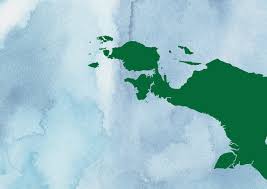DOB Golden Moment Makes Papua Advanced
By : Levi Raema Wenda)*
The establishment of a New Autonomous Region (DOB) in Papua is the gateway to realizing an Advanced Papua. This is because with the expansion of the region in Papua, it is hoped that there will be a leap in the progress of welfare in the Papua Province.
The New Autonomous Region in Papua was officially ratified at the 26th Plenary Meeting for the 5th session of session year 2021-2022 at the Nusantara II Building, Parliament Complex, Senayan, Jakarta, last Thursday 30 June 2022. With the promulgation of the bill on Papua New Guinea, Indonesia officially has 37 provinces, with the addition of three new provinces in Papua.
The three new provinces in Papua are Central Papua Province with Nabire as its capital, South Papua Province with Merauke as its capital, and Papua Mountains Province with Jayawijaya as its capital. The chairman of the DPR RI, Puan Maharani, in her press statement said that the enactment of this new law on new autonomous regions would guarantee the social and economic rights of the Papuan people. Puan added that the regional expansion was carried out for the purpose of equitable development and justice in Indonesia.
Papuan Local Political Observer Frans Maniagasi argues that the purpose of establishing Papua New Guinea is to accelerate development and expand the reach of government bureaucratic services. This is in line with what was conveyed by Deputy V of the Presidential Staff Office, Jaleswari Pramodawardhani. Jaleswari conveyed the idea of expansion in line with directions from the President who wanted a leap in prosperity progress in Papua Province.
This is because the area of Papua is quite large, and infrastructure access from one district to another is still very limited, so conditions in some areas are very concerning. The presence of new autonomous regions can strengthen infrastructure development in each expansion area.
Jaleswari added that there are three approaches to promote prosperity in Papua. The first is from a quantitative perspective, where there is an increase in special special autonomy funds from the 2% increase to 2.25% from the national general allocation fund. The second approach is from a qualitative perspective. From this point of view, the use of special autonomy funds is determined specifically by the percentage of its use to encourage welfare development. For example, special allocations for improving the welfare of OAP, strengthening traditional institutions, spending on education and health.
The last approach is in terms of accountability, this is because the use of special autonomy funds must be properly regulated by prioritizing the principles of good financial management. This is done through coordinating supervision from ministries, non-ministerial government agencies, local governments, DPR, DPRD, BPK and also involving academics from universities. This layered supervision is carried out to prevent the occurrence of budget irregularities for the realization of progress in the Land of Papua.
The birth of new autonomous regions in Papua can also be a solution to improve security in the Community. This is inseparable from the emergence of three Regional Police (Polda) and the Regional Military Command (Kodam) who will help maintain community security from conflicts that may arise as well as from the threat of attacks that are often carried out by the Papuan Separatist Terrorist Group (KST).
So far, it is known that KST has been aggressively denying the birth of new autonomous regions in Papua. This is because they do not want the presence of security guards to be stronger in Papua. In fact, these security forces also help maintain the security and comfort of the parties involved in advancing Papua, such as infrastructure development project workers, teachers, and medical personnel who serve the community.
Regional expansion in Papua can also be a golden opportunity for the Papuan people to improve their welfare. This is due to the provision of affirmations for OAP in accepting ASN in Papua. The chairman of Commission II of the DPR, Ahmad Doli Kurnia, said that the expansion in Papua would guarantee the existence of OAP through affirmation of ASN acceptance. He said that the determination of ASN in Papua must be filled by a maximum of 80% of OAP.
ASN acceptance in Papua is carried out by increasing the age of CPNS OAP to a maximum of 48 years from the previous 35 years. Then honorary OAP employees who are registered in category II BKN become CPNS with a maximum age of 50 years.
This affirmation policy for OAP is carried out to control the migration of people from outside Papua. As is known, there are many CPNS registrants who deliberately choose formation locations in Papua just to catch up with passing the test. However, when the applicant is declared to have passed and started working, the applicant submits a transfer to outside Papua for various reasons. This is very unfortunate because there were vacant positions left by the applicants so that public services were disrupted.
Increasing development in the physical and social sectors is indeed the main key to increasing progress in Papua. With all the efforts and positive impacts of the Papua New Guinea, it is hoped that it will be the key to increasing prosperity and progress in Papua. Support from various parties so that the implementation of new autonomous regions can run optimally is what we all hope for. Hopefully the progress of Papua will be achieved soon and let’s all Indonesian people welcome Indonesia Forward 2045.
)* The author is a Papuan Observer, a former journalist for local media in Papua.
